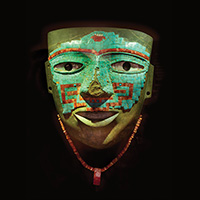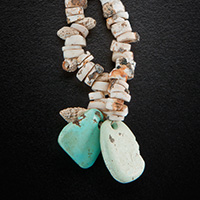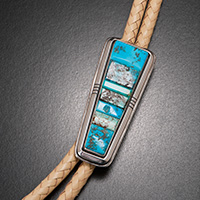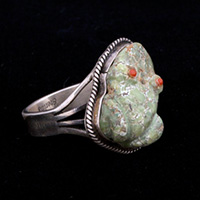Southwest Traditions:
Navajo Boxes
Beginning in the early 1900s, silver boxes were made for sale in the tourist market, becoming a vehicle for Navajo silversmiths to demonstrate their skills. Repoussé (hammering from the reverse side), stamping, appliqué, filing, engraving and other techniques were used to decorate them.
Navajo silversmiths often did not cut their own stones, instead buying commercially available, ready-to-use cabochons. These artists prized turquoise made even more beautiful by webbing or other dramatic matrixes. Large pieces of turquoise are rare and desirable and have always been costly.
Initially, cabochons were almost always symmetric, but as turquoise became less abundant, the stone was cut to maximize quantity and irregular cabochons became common.
Although their tribal government uses the name Navajo, many individuals prefer to identify themselves as Diné, which means “The People” in the Navajo language. Both terms are commonly used.
The Number 8 mine in Nevada produced some of the largest turquoise nuggets ever found. Turquoise cabochons of this size are rare. (Gift of Sanford Besser; 56033/12, Origin/Artist: Navajo)



